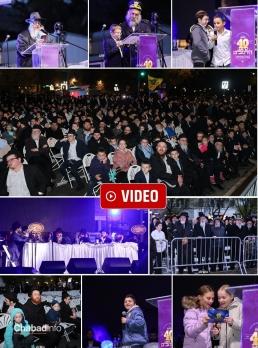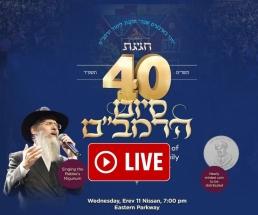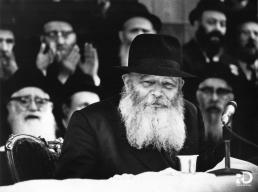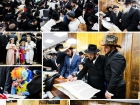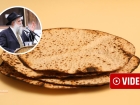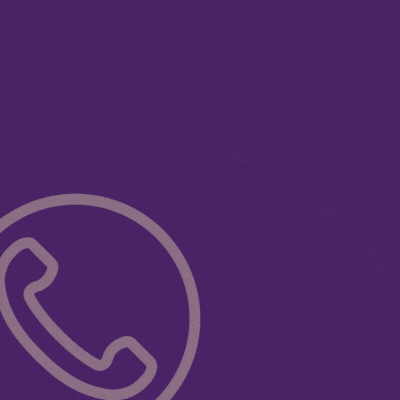‘Something Called a Neshama’ – WSJ Lauds Chabad
An op-ed piece from the Wall Street Journal by columnist Elliot Kaufman dissects the less than pleasant results of the recent Pew Research poll on the state of Judaism in America, discovering the crucial role of Chabad in undoing the damage • Full Story
Elliot Kaufman/Wall Street Journal
“Twice as many Jewish Americans say they derive a great deal of meaning and fulfillment from spending time with pets as say the same about their religion,” a Pew Research study finds. While the future of the Jewish people is uncertain, Jews can always count on Pew for provocative, and sometimes depressing, statistics about themselves.
In the organized Jewish community, all you have to say is “Pew.” Everybody gets the one-word reference—and knows it signifies danger ahead. Pew’s landmark 2013 study, “A Portrait of Jewish Americans,” sparked more arguments than there are Jews. But cited for years, the data lost their incendiary qualities as time went on. Fortunately, Pew has added kindling to the raging debate with “Jewish Americans in 2020,” a 248-page report based on interviews with 4,718 Jewish adults.
First, some good news: The global Jewish population appears to have returned to its pre-Holocaust level. Plus, from education to income and subjective well-being, U.S. Jews are doing swell. But these indicators are secular. They tell us nothing about how Jews are doing as Jews. That’s where the survey darkens.
Only 12% of American Jews attend weekly services. Progressives often counsel against despair, arguing that Jews express their Judaism through culture instead. From this emanates a different idea of an “involved” Jew: politics guided by Jewish values, participation in Jewish intellectual life, interest in the condition of the Jewish people, perhaps even nontraditional Shabbat or holiday observance. The Jewish future, the argument goes, can be less religious but no less Jewish.
Too bad that’s not realistic. “It’s not the case,” the study finds, “that Jewish cultural activities or individualized, do-it-yourself religious observances are directly substituting for synagogue attendance and other traditional forms of Jewish observance. More often, they are complementing traditional religious participation.” Drop traditional observance and Pew finds that the cultural engagement, measured along 12 metrics, collapses too.
What about those whom Pew calls “Jews of no religion”? Only 7% say being Jewish is very important to their lives, and it’s unlikely that number will grow in the next generation. Among married Jews of no religion, 79% have a non-Jewish spouse. Their children intermarry at an even higher rate. A substantial portion of their grandchildren won’t be Jewish at all.
The bad news can’t be ignored. As philosopher Emil Fackenheim put it in 1968, speaking for an older generation: “Jews are forbidden to grant posthumous victories to Hitler. They are commanded to survive as Jews, lest the Jewish people perish.”
Rabbi Motti Seligson says that “losing Jews is tragic.” But in his role as media director for Chabad-Lubavitch, a Brooklyn-based Hasidic Jewish movement known for ministering to less-religious Jews, he has reason for optimism. Whereas the 2013 Pew study treated Chabad solely as an Orthodox subdenominational identity, this study asks all Jews if they attend Chabad events such as dinners, prayer services and more. It finds impressive engagement.
Thirty-seven percent of U.S. Jews say they’ve participated in Chabad activities or services, including 21% who do so “often” or “sometimes.” The latter includes 25% of Conservative Jews, 12% of Reform Jews, 8% of the unaffiliated and 6% of Jews of no religion. Considering that only 10% of unaffiliated Jews and 8% of Jews of no religion say they attend a synagogue of any kind even a few times a year, Chabad’s numbers are large.
A 2016 study found that unaffiliated Jews who participated during college at one of Chabad’s nearly 200 U.S. campus chapters had 107% greater Jewish engagement after college than similar students who didn’t participate. Researcher Steven Cohen, formerly a professor at Hebrew Union College, concluded, “You do not have to be assimilated to reach other assimilated Jews. In fact, Chabad shows that it’s actually better to be engaged and Jewishly learned to succeed.” Pew’s data suggest that this—the Chabad approach—is the best way to reach Jews.
Rabbi Seligson agrees with progressives that the less involved “want something different.” But they aren’t looking for a watered-down Judaism. “They’re looking for something authentic,” he says. “The minute you have to go outside of Judaism to answer their questions, you’ve lost them. They don’t need a rabbi for something that’s not Jewish.”
That’s how I felt at Stanford, when on Yom Kippur, the holiest day of the year, a campus rabbi sermonized in support of Black Lives Matter. Everywhere at university, one could find opportunities for political commitment and therapeutic affirmation. But Chabad seemed like it might have wisdom.
Say a nonreligious Jew drops by Chabad out of nostalgia for family Shabbat dinners. “We help them appreciate that this deep feeling of connection to cultural experiences are in fact godly experiences,” Rabbi Seligson says. How could Jews of no religion connect this way? “It’s something called a neshama,” a soul, he explains with a laugh. “We’re dealing with things that are beyond what a Pew survey is going to pick up on.”
255
Join ChabadInfo's News Roundup and alerts for the HOTTEST Chabad news and updates!















